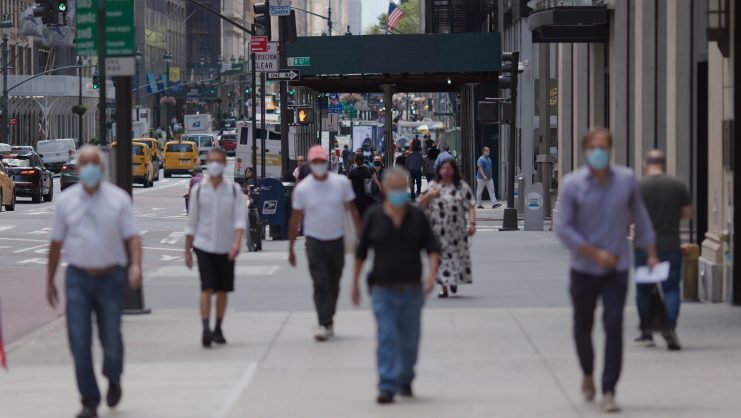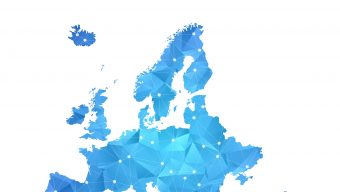Sovereign wealth funds are going through a time of extraordinary activity. Today there are 94 sovereign wealth funds in the world. In total, they manage 8.4 trillion US dollars. That is, sovereign wealth funds manage assets of greater value than the hedge fund and private equity industry combined, and thus their influence on listed markets and in many global alternative industries (real estate, private equity, and venture capital) is beyond doubt. In addition, in the last 12 years, since the previous global crisis, the funds have continued to take increasingly risky positions, and in turn becoming increasingly professional, increasingly influential.
Sovereign wealth funds are long-term investment funds controlled directly or indirectly by the governments of countries. Be it the royal families of the Gulf countries or the government of the day with varying degrees of democratic quality (from Turkey to New Zealand, passing through Nigeria or Panama), those who control the funds know that their investments respond to two great logics: serve as a financial cushion in times of macroeconomic stress (either fiscal or monetary) and as an instrument of long-term legitimacy (promotion of economic diversification, natural resource management, intergenerational savings, geopolitical influence, etc.)
At IE University’s Sovereign Wealth Research, we have been following the funds’ activity for 12 years. For eight years we have been preparing an analysis report together with ICEX-Invest in Spain. The economic crisis that we are experiencing in the world, caused by the coronavirus, attacks the two main objectives of sovereign wealth funds. Those who have accumulated sufficient resources, through well-designed fiscal rules, can go to the fund today to alleviate the ravages of the crisis on their domestic economies. But other funds face different dilemmas: designed to save in the long term and with strict investment policies, during these months of great need, the objectives of the funds are rethought and the limits of action are extended.
Before analyzing the concrete (re)actions that some of the most important funds in the world have been developing since March, and evaluating the impact on their economies, it is important to highlight another twin crisis that the pandemic has displaced from the covers in non-producing countries. The price of oil and natural gas has experienced a very rapid and deep collapse caused by the breakdown of negotiations between Russia and OPEC to respond to the effects of the coronavirus. The huge accumulated excess supply, caused by hesitant demand in developed economies and in China, and the entry into the oil market of US shale gas, became even heavier when countries closed their economies and the world quarantined itself. (In some areas they continue and in others they return to different modalities of lockdowns.)
The absence of production cuts has led to public deficits in many economies, among which those in the Middle East stand out: Saudi Arabia, Kuwait, the United Arab Emirates, Qatar, and Bahrain. The Middle East is the most important geographic pole of sovereign wealth in the world – it contains 15 sovereign wealth funds with assets under management in excess of $3 trillion. The region depends on “black gold” and annual public accounts are set based on the price of crude oil. Only Qatar, the richest emirate in the world, is able to balance its accounts with prices of the barrel below 40 dollars. The rest need much, much higher prices. Iraq and Kuwait could square accounts with a barrel at 60 dollars, while the new prime minister of Iraq – the second largest producer in OPEC and fourth in the world – has decided to cut public wages and Kuwait expects a deficit that could reach 40% of GDP. Countries like Saudi Arabia and the UAE need barrel prices around $75. Others, such as Algeria and Iran, simply do not expect to go to crude oil to clean up their accounts because they need prices, respectively, above $150 in the North African country and $350 in the case of the Persian Islamic Republic.
Well, the situation is extremely delicate for those countries facing a double crisis of health crisis, which entails almost simultaneous supply and demand shocks, and of oil, which affects their main source of public revenue source. Sixty percent of the wealth managed by sovereign funds comes from the sale of hydrocarbons. But there is another 40%, managed mainly by countries in East and Southeast Asia (China, Singapore, South Korea) along with Australia and New Zealand, with no connection to oil. This group of countries suffers at home the economic impact of Covid-19 and confinement, in addition to being affected by the decline in tourism, global value chains and trade.
The funds are reacting and some of them have arrived to the crisis with their homework done and with liquidity rates in their portfolios at maximum. The average SWF’s asset allocation is 28% in fixed income or liquid assets, 47% in listed equities and the remaining 25% in unlisted alternative assets. In the last five years, equities have fallen in favor of alternative assets, while fixed income has remained stable. It should be mentioned that the funds are very different from each other, so the meaning of the average may not be significant. However, despite some scandals in recent years, the improvement in reputation and visibility is essential because this gives the funds greater credibility domestically (very important as we will see below) and also internationally.
Sovereign wealth funds have responded to the COVID-19 crisis with three different strategies: mitigation, adaptation, and opportunity (a language that should sound familiar to those involved in sustainability).
In the first section—mitigation—those investments and actions dedicated to cushioning the economic impact of the pandemic, we can find a block of funds (Ireland, Nigeria, Iran, or Alaska) that have contributed directly to the creation of mechanisms that directly help those domestic companies (of any size) impacted by the virus. In addition, funds from countries such as Singapore, UAE, or Malaysia that have significant stakes in national airlines on their balance sheets and are coming to their rescue in the form of loans, capital and guarantees.
Other funds are looking to adapt. For example, there are numerous investments of sovereign wealth funds in biotechnology. Fifty percent of SWF investments in 2020 in venture capital have been dedicated to this subsector: recently established companies in full search of the vaccine, on solutions to improve health information systems or developing applied artificial intelligence for the healthcare and the pharma industries (Singapore funds stand out, Temasek, and GIC, accompanied by Mubadala in the UAE or Qatar Investment Authority.) In other cases (Russia and Abu Dhabi), sovereign wealth funds (RDIF and Mubadala, respectively) lead international consortiums for the production of protective masks, respirators, or medical equipment. This investment trend in biotechnology had already been important before COVID-19’s impact, with 20% of sovereign wealth fund investments in startups between 2014 and 2019 already being directed to this important subsector – which is now proving ever more crucial.
In March, during the outbreak of the health crisis, with markets trading at historical lows and some very important and stable industries severely damaged, the entry of sovereign wealth funds was only a matter of time. In the previous economic crisis, the funds invested nearly $60 billion in the Western financial sector. The rescue of Barclays, Citigroup, UBS, Merrill Lynch, and Morgan Stanley bore the seal, among others, of the Abu Dhabi Investment Authority, China Investment Corporation, Temasek, and the Qatar Investment Authority. Then, the financial sector was the main one damaged in the stock market and on their books. Today, the pandemic weighs down any contact-related activities: restaurants, hotels, travel, and entertainment suffer the consequences of social distancing and the risk of contagion. For example, prominent entertainment companies like Cirque du Soleil have closed after years of successful world tours and innovation, and many others have seen their valuations plummet. Whether this change is temporary or permanent is a key question, the answer to which we still do not know. The situation today is uncertain, just as in 2008 when there was no clarity about the viability of investment banking or the very future of capitalism.
For this reason, when the Public Investment Fund (PIF) – the renewed and aggressive Saudi SWF – was covered on the front pages of newspapers in April and May of this year, with its investments in the most affected sectors, we were reminded of those prior years of aggressive purchases made by Qatar Holding (QIA) in search of trophy assets, considering the long-term value of companies and industries that demonstrated resilience. PIF investments are a demonstration of the counter-cyclical stabilization capacity that these long-term funds can play in damaged markets.
PIF has invested hundreds of millions in companies such as Carnival (the world’s leading cruise company), Live Nation (a listed concert company that in 2019 channeled 98 million tickets to its shows around the world with revenues of $11.5 billion), and Newcastle FC (an English Premier League team, whose operation was hatched before the pandemic, and is called off so far). In addition, showing off as a long-term investor who trusts its own business (and renouncing diversification), PIF entered the capital of five of the most important oil companies in the world (with the risk inherent in the hydrocarbon sector in the short and long term). In a very complicated context in its domestic economy, PIF is in charge of leading the economic transformation and modernization of the country. However, PIF has not wanted to miss the opportunity to get visibility and positioning quotas. It has been possible, among other things, because PIF has executed two operations that have provided it with almost $100 billion of liquidity: the IPO of Aramco and the recent sale of its stake in SABIC.
This channel of opportunity, however, suffers from the need to mitigate and adapt. The crisis at home has made us not see the SWF deal activity, for the moment, that we did see in the months of the global financial crisis twelve years ago. It is a key moment for long-term funds. Part of the adaptation may go through investment in sectors that may be driven into this new normal. Thus, the funds have been positioned in companies that provide digital information infrastructure (Cellnex is a clear example, with the participation of ADIA and GIC), that suppose solutions to telework (Temasek invests in Slack) or that support commerce (such as logistics giants Logicor, acquired by China Investment Corporation and Prologis, in alliance with NBIM, the Norwegian fund; or the massive support of SWFs—ADIA, Mubadala, PIF—to the Reliance’s Jio Platforms, India’s largest mobile network operator). Others are investing in the biotechnology of the future (beyond COVID-19), and in treatments and solutions for aging societies and the growth of the middle classes in other parts of the world. The adaptation in the medium term towards more efficient forms of mobility, urban life, and energy are also on the receiving end of attention from the funds.
In total, the three strategies (mitigation, adaptation, and opportunity) have involved outlays in excess of $70 billion between March and August, 2020. Beyond the usual vision of sovereign wealth funds as global liquidity helicopters, those that have known how to equip themselves with strong governance and clear rules have served, and will continue to serve, as a much-needed instrument that cushions the impact of crises, help to adapt the economy, and explore future opportunities. Hopefully, these lessons in savings and responsibility will be consolidated and improve the lives of many people.
© IE Insights.






